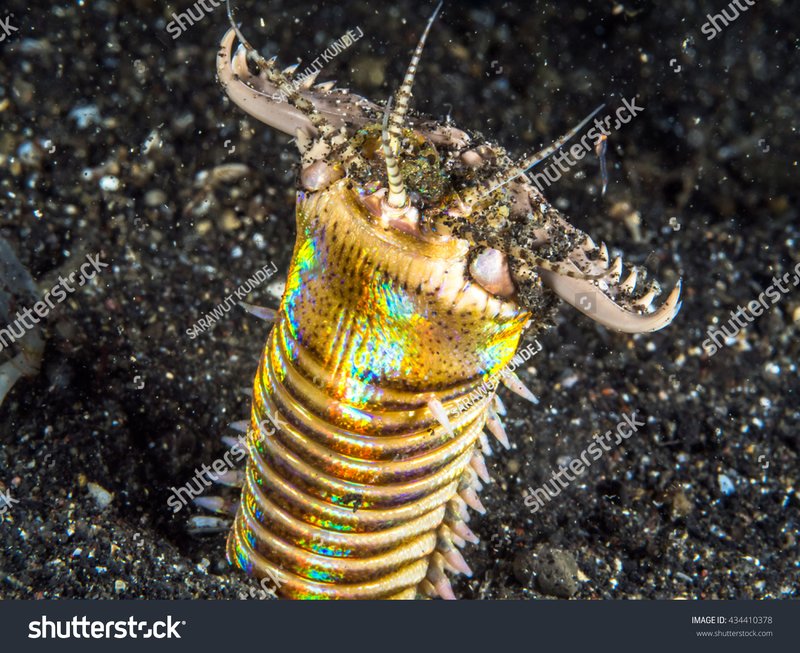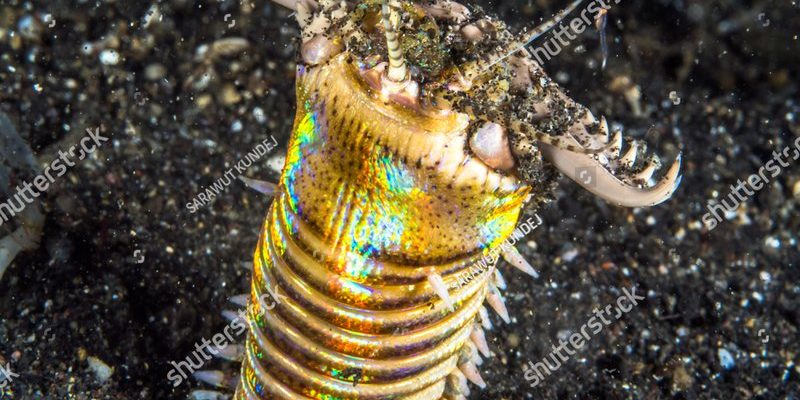
Imagine the Bobbit worm as the ocean’s version of a stealthy assassin. It patiently hides in its burrow until it senses movement nearby, then strikes with lightning speed. But just how long do these vibrant, predatory wonders live? Understanding their lifespan helps us appreciate their role in the ecosystem, whether they’re nestled in the depths of the ocean or being cared for in aquariums. Stick around, and we’ll explore everything you want to know about the Bobbit worm’s lifespan!
What Is a Bobbit Worm?
Before we jump into their lifespan, let’s take a moment to understand what a Bobbit worm actually is. Officially known as *Eunice aphroditois*, this marine creature can grow up to 10 feet long! Yes, you read that right—10 feet! With a body covered in bristles, or *chaetae*, these worms are often brightly colored, ranging from greens to pinks, making them quite a sight to behold.
Bobbit worms reside in sandy or muddy substrates in tropical and subtropical oceans, primarily found in coral reefs. They are known for their aggressive nature and impressive hunting skills. They rely on their keen sense of vibration to detect prey, which usually includes fish, crabs, and even smaller mollusks. When the moment is right, they dart out and grab their prey with their powerful jaws.
Imagine watching a Bobbit worm in action. With its head poking out of a burrow, it appears pretty unassuming. Then, bam! It strikes. That’s the beauty of nature—something that might seem harmless can be a fierce predator when needed.
Average Lifespan of Bobbit Worms in the Wild
When it comes to Bobbit worms, their lifespan in the wild is estimated to be between **5 to 10 years**, though some reports suggest they could live longer. However, there are several factors at play that influence their survival.
One of the biggest threats is their environment. Changes in water temperature, pollution, and habitat destruction can all impact how long these worms live. Just like many other marine creatures, if the conditions aren’t right, their lifespan can significantly shorten.
Additionally, Bobbit worms have natural predators. Fish, crabs, and even other Bobbit worms can pose threats to their survival. So, while they have the potential to live a long time, their lifespan can be unpredictable based on their surroundings and who’s lurking nearby.
Bobbit Worm Lifespan in Captivity
If you’re wondering how long Bobbit worms live in captivity, the answer might surprise you. In well-maintained aquariums, they can live **up to 10 years or more**. However, achieving this requires a careful balance of conditions.
Captive Bobbit worms depend heavily on water quality. Maintaining a stable temperature and salinity, along with proper filtration, is key. In a home aquarium, any sudden fluctuations can stress them out and shorten their lifespan.
Feeding habits also play a critical role. In the wild, they can grab living prey with ease, but in captivity, they need a consistent diet of appropriately-sized food. This could include fish chunks or other marine organisms. Ensuring they’re well-fed and healthy is essential for keeping a Bobbit worm thriving.
Factors Affecting Bobbit Worm Lifespan
A few key factors can significantly impact the lifespan of Bobbit worms—both in the wild and in captivity. Here’s a closer look:
- Water Quality: Clean, well-maintained water is crucial. Poor water conditions can lead to diseases and stress, potentially shortening their lives.
- Diet: A balanced diet is imperative. Regular feeding with high-quality food helps them grow strong and healthy.
- Temperature and Salinity: These worms prefer stable environments. Sudden changes can be detrimental.
- Predation: In the wild, they must avoid predators. In captivity, the absence of threats can help them thrive longer.
Each of these elements plays a significant role in determining how long a Bobbit worm lives. It’s fascinating how interconnected these factors are; changing one can affect the whole system.
Reproduction and Its Impact on Lifespan
Bobbit worms reproduce sexually, which adds another layer to their lifecycle. In the wild, these worms can reproduce multiple times throughout their lives, which can result in a new generation—and possibly a reduction in competition for resources.
Interestingly, during the breeding process, worms may undergo drastic changes, including shedding some of their body segments. This can temporarily affect their health and lifespan since they’re expending energy to reproduce. In captivity, however, this process can be managed more effectively, allowing for a longer lifespan.
Furthermore, researchers are still studying how reproduction impacts their longevity. Understanding this complex relationship is essential for better care practices in aquarium settings.
Why Knowledge of Lifespan Matters
So, why should we care about the lifespan of Bobbit worms? For aquarists, understanding their lifespan helps create better habitats. It ensures we can replicate their natural conditions and provide optimal care.
In conservation circles, knowledge of their lifespan aids in understanding population dynamics. As habitats change due to climate change or human activity, knowing how long these creatures live can help in planning efforts to protect them.
In essence, understanding Bobbit worm lifespans allows us to appreciate the balance of marine ecosystems. These unique creatures play important roles, and by caring for them, we contribute to the health of our oceans.
Bobbit worms are truly remarkable creatures that deserve our admiration. Their lifespan, whether in the wild or in captivity, highlights the delicate balance of marine life. While they can live up to 10 years under the right conditions, factors like water quality, diet, and predation can significantly impact that timeframe.
As we learn more about these fascinating marine beings, it’s essential to understand how we can care for them better. Whether you’re considering adding a Bobbit worm to your aquarium or simply want to appreciate their beauty in the wild, knowing about their lifespan can help deepen our connection to the oceans and their inhabitants. So, next time you think of Bobbit worms, remember: they’re not just long, segmented hunters, but a vital part of our underwater world.

